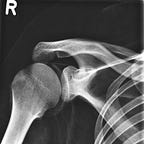Chromatography Notes
Relevant Techniques in JF Pharm
- TLC (and HPTLC)
- Column Chromatography
- GC
- HPLC
Technique Classification
The chromatographic technique used is dependent on the combination of phases in use.
liquid-solid, gas-liquid etc.
Types of Molecular Interactions Causing Change in Affinity
- Dipole-dipole
- Ion-Induced Dipole
- Hydrogen Bonds
- Coulombic
- Dispersive
Mobile Phases
Normal phase uses water as a base
Reverse-phase uses organic solvents as the base
Usually pick solvents which are non-toxic, cost-efficient and that do not degrade on storage. Such examples are…
- Methanol
- Ethanol
- TFA
- Acetonitrile
- Formic Acid
- Isopropyl alcohol.
among many others.
Stationary Phase Types
Many silica based, having amphiphilicity, with a polar head and non-polar tail.
Types of stationary phases include
- Alumina
- Silica
- Modified Silica
Types of setups for these include
- Reverse — Most common
- Normal
- Ion-exchange
- Ion Pair
- Size Exclusion — Pores
Functional Groups in Order of lipophilicity.
- Alkanes
- Alkenes
- Aryl Halides
- Sulphides
- Ethers
- Aldehyde/Ketone/Esters
- Nitros
- Amides
- Sulphones
- Sulphoxides
Indicators of Note
Ninhydrin — Amines turn reddish pink
Dragendorff — Alkaloids turn orange
Vanillin — Steroids, terpenes and sugars turn blue-black
UV light used for conjugated compounds — Compounds with high degrees of aromaticity.
